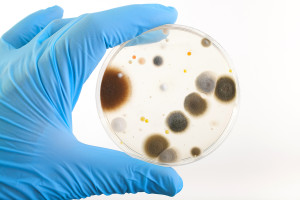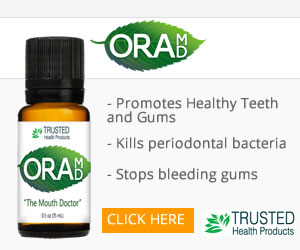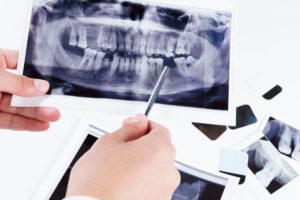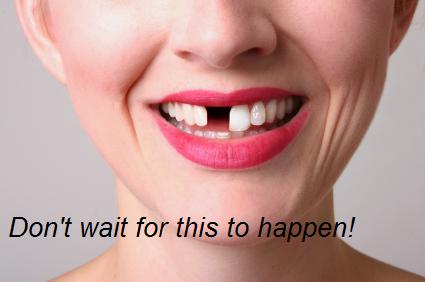It’s generally advisable to wait for a short period after getting a dental filling before brushing your teeth. The time you should wait can vary depending on the type of filling material used and your dentist’s recommendations.
If you’ve had a composite (tooth-colored) filling, it’s a good idea to wait until the anesthesia has worn off and then you can usually brush your teeth as usual. This is because composite fillings set and harden quickly with the help of a curing light used by the dentist.
For amalgam (silver) fillings, it’s typically recommended to wait for 24 hours before brushing your teeth after the filling procedure. This allows the filling to set and harden properly.
Always follow the specific instructions provided by your dentist, as they may have individual recommendations based on the type of filling, the size of the filling, and other factors related to your oral health. If you have any concerns or questions, it’s best to contact your dentist for guidance.
Dental fillings are used to repair and restore teeth that have been damaged by decay or trauma. There are several types of dental fillings, each with its own set of pros and cons. The most common types of dental fillings include:
- Amalgam Fillings:
- Pros:
- Durable and long-lasting.
- Cost-effective.
- Well-suited for large cavities in back teeth.
- Quick and easy to place.
- Cons:
- Contains mercury, which raises concerns for some patients.
- May not match the color of natural teeth, making them more noticeable.
- Pros:
- Composite Fillings:
- Pros:
- Tooth-colored and can be closely matched to natural tooth color.
- Bonds directly to the tooth, providing additional support.
- Versatile and can be used for small to medium-sized cavities in front or back teeth.
- Cons:
- Less durable than amalgam, may need replacement sooner.
- Typically more expensive than amalgam.
- May take longer to place than amalgam.
- Pros:
- Ceramic Fillings (Inlays and Onlays):
- Pros:
- Tooth-colored and aesthetically pleasing.
- Resistant to staining.
- Long-lasting and durable.
- Cons:
- More expensive than amalgam and composite fillings.
- Requires more than one dental visit for placement.
- Pros:
- Glass Ionomer Fillings:
- Pros:
- Releases fluoride, which can help prevent further decay.
- Bonds well to the tooth structure.
- Suitable for small to medium-sized cavities, particularly in non-biting surfaces.
- Cons:
- Not as durable as amalgam or composite fillings.
- Prone to wear and may need replacement sooner.
- Pros:
- Gold Filling:
- Pros:
- Highly durable and long-lasting.
- Well-tolerated by gum tissues.
- Cons:
- Expensive.
- Does not match the color of natural teeth.
- Pros:
- Composite Resin and Glass Ionomer Cement (Resin-modified Glass Ionomer) Fillings:
- Pros:
- Combines the benefits of composite and glass ionomer fillings.
- Tooth-colored.
- Releases fluoride.
- Cons:
- May not be as durable as some other options.
- Pros:
The choice of filling material depends on factors such as the size and location of the cavity, cosmetic concerns, durability, and cost. It’s important to consult with your dentist to determine the most suitable option for your specific dental needs. Additionally, advancements in dental materials continue to evolve, and new options may become available over time.
After getting a cavity filling, it’s important to regularly go to the dental office in order to maintain good oral hygiene to promote healing and prevent further dental issues. Here are some general tips:
- Wait Before Brushing: You may want to wait for a short period before brushing around the filled tooth. Your dentist will provide specific instructions based on the type of filling and the materials used. Some dentists recommend waiting for a few hours or even until the next day.
- Use a Soft-Bristled Toothbrush: When you do start brushing, use a soft-bristled toothbrush to avoid causing irritation or damage to the filled area. Gentle brushing is essential to keep the area clean without putting too much pressure on the filling. Brush in a circular motion to loosing food particles.
- Be Gentle with Flossing: Flossing is important for cleaning between teeth and preventing decay. Be gentle around the filled tooth while flossing to avoid dislodging the filling or causing discomfort. You might want to use waxed floss, which can be less likely to catch on the filling.
- Antibacterial Mouthwash: Consider using an antibacterial or fluoride mouthwash as part of your oral hygiene routine. This can help reduce the risk of infection and strengthen your teeth. Use special care and avoid harsh chemicals in commercial toothpastes. Avoid fluoride toothpaste. They can be harsh on your gums and teeth. avoid a fluoride rinse.
- Avoid Sticky or Hard Foods: For a short period after getting a filling, it’s a good idea to avoid sticky and hard foods that could potentially damage the filling or cause discomfort. Eat softer foods instead of crunchy foods if you have a newly filled tooth or even a temporary dental filling for a tooth cavity. You may have sensitive teeth and gums, and tooth enamel, so it may be a good idea to avoid hot and cold beverages. Right after a filling ensure minimal chewing or excessive pressure
- Regular Dental Check-ups: Continue with regular dental check-ups to monitor the condition of your fillings and address any issues early on. Do not wait a long time for your next appointment. Set long term appointments. Set regular checkups. At the dentist’s office, you can get the latest status on your overall dental health. Major dental problems can be prevented if you keep up regular care for the health of your teeth and gums. Follow-up appointments are essential.
- Watch for Signs of Problems: Keep an eye out for any signs of problems such as increased sensitivity, pain, or changes in the way your bite feels. If you notice anything unusual, contact your dentist promptly.
- Maintain a Healthy Diet: A well-balanced diet contributes to overall oral health. Limit sugary snacks and beverages, as they can contribute to tooth decay.
Remember, it’s crucial to follow the specific post-operative instructions given by your dentist. If you have any concerns or questions about caring for your filled tooth, don’t hesitate to contact your dental professional for guidance.
Bad breath, also known as halitosis, can indeed be associated with periodontal (gum) disease. Periodontal disease is caused by bacteria that accumulate in the spaces between the teeth and gums, forming plaque and tartar. These bacteria release sulfur compounds, which can contribute to bad breath.
The following factors related to periodontal disease may contribute to bad breath:
- Bacterial buildup: The bacteria in plaque and tartar produce foul-smelling compounds, including sulfur compounds, which can result in bad breath.
- Gum inflammation: Periodontal disease often involves inflammation of the gums. Inflamed gums can harbor more bacteria and contribute to bad breath.
- Pockets between teeth and gums: As periodontal disease progresses, pockets can form between the teeth and gums, providing a space for bacteria to thrive and produce odorous compounds.
It’s essential to address the underlying cause of bad breath to effectively treat the issue. Regular dental hygiene practices, such as brushing and flossing, are crucial for preventing and managing periodontal disease. Additionally, professional dental cleanings can help remove plaque and tartar that may contribute to bad breath.
If you are experiencing persistent bad breath, it’s advisable to consult with a dentist for a thorough examination and appropriate treatment recommendations. Other factors, such as dry mouth, certain medical conditions, or dietary habits, can also contribute to bad breath, so a comprehensive evaluation is important.
Killing periodontal bacteria is crucial for maintaining oral health and preventing periodontal diseases. Periodontal diseases, such as gingivitis and periodontitis, are inflammatory conditions that affect the supporting structures of the teeth, including the gums, periodontal ligaments, and alveolar bone. These diseases are primarily caused by the accumulation of plaque, a sticky film of bacteria that forms on the teeth.
Here are several reasons why killing periodontal bacteria is important:
- Prevention of Gum Inflammation (Gingivitis): Plaque buildup can lead to inflammation of the gums, a condition known as gingivitis. Gingivitis is characterized by red, swollen, and bleeding gums. Killing the bacteria in plaque helps prevent and manage gingivitis.
- Halting Disease Progression: If left untreated, gingivitis can progress to periodontitis, a more severe form of gum disease. Periodontitis involves the loss of the bone that supports the teeth, leading to tooth mobility and, eventually, tooth loss. Eliminating the bacteria is crucial to stop the progression of periodontal diseases.
- Preventing Tooth Loss: Periodontal diseases are a leading cause of tooth loss in adults. By controlling and eliminating the bacteria responsible for these diseases, the risk of tooth loss is significantly reduced.
- Systemic Health Benefits: There is evidence suggesting a link between periodontal health and overall health. Periodontal bacteria and the inflammation associated with gum disease may contribute to systemic conditions such as cardiovascular disease, diabetes, and respiratory infections. Maintaining oral health by killing periodontal bacteria can have positive effects on overall well-being.
- Preserving Supporting Structures: Periodontal bacteria can cause damage to the structures supporting the teeth, including the periodontal ligaments and alveolar bone. Eliminating the bacteria helps preserve these structures and maintains the stability of the teeth within the jawbone.
Methods for killing periodontal bacteria include good oral hygiene practices such as regular and effective brushing, flossing, and professional dental cleanings. In some cases, antimicrobial mouthwashes or antibiotics may be prescribed to address bacterial infections.
Overall, maintaining a healthy oral environment by controlling and eliminating periodontal bacteria is essential for preventing the onset and progression of periodontal diseases and promoting overall oral and systemic health. Regular dental check-ups and cleanings play a crucial role in achieving and maintaining optimal oral health.




 If you are among those with
If you are among those with 